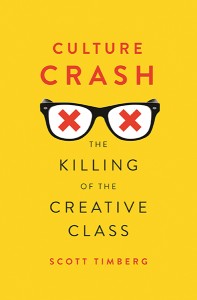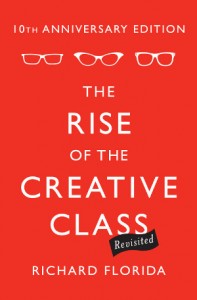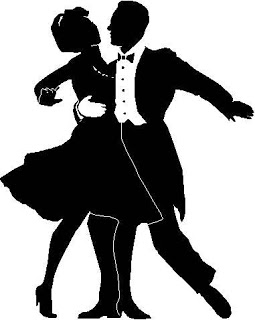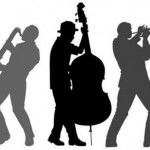Marlowsphere Blog (#121)
 Practioners in the creative arts are in trouble.
Practioners in the creative arts are in trouble.
According to author Scott Timberg in his recently distributed book Culture Crash: The Killing of the Creative Class (Yale University Press, 2015):
The creative class is melting. . . .
Record shops and independent bookstores close at a steady clip; newspaper and magazines announce repeated waves of layoffs. Tower Records crashed in 2006, costing 3,000 jobs. The bankruptcy of Border Books in 2011—almost 700 stores closed, putting roughly 11,000 people out of work—is the most tangible and recent example. One of the last video rental shops in Los Angeles—Rocket Video—closed soon after. On a grand scale, some 260,000 jobs were lost in traditional publishing and journalism in the three years after 2007, according to U.S. News & World Report. In newspapers alone, the website Paper Cuts tracked more than 40,000 job cuts in the three years after 2008. (p. 15).
Timberg’s latest offering seems to be a counterpoint, a bookend to Richard Florida’s The Rise of the Creative Class (Revisited) (Basic Books 2014), described as follows on Amazon.com:
 Initially published in 2002, The Rise of the Creative Class quickly achieved classic status for its identification of forces then only beginning to reshape our economy, geography, and workplace. Weaving story-telling with original research, Richard Florida identified a fundamental shift linking a host of seemingly unrelated changes in American society: the growing importance of creativity in people’s work lives and the emergence of a class of people unified by their engagement in creative work. Millions of us were beginning to work and live much as creative types like artists and scientists always had, Florida observed, and this Creative Class was determining how the workplace was organized, what companies would prosper or go bankrupt, and even which cities would thrive.
Initially published in 2002, The Rise of the Creative Class quickly achieved classic status for its identification of forces then only beginning to reshape our economy, geography, and workplace. Weaving story-telling with original research, Richard Florida identified a fundamental shift linking a host of seemingly unrelated changes in American society: the growing importance of creativity in people’s work lives and the emergence of a class of people unified by their engagement in creative work. Millions of us were beginning to work and live much as creative types like artists and scientists always had, Florida observed, and this Creative Class was determining how the workplace was organized, what companies would prosper or go bankrupt, and even which cities would thrive.
In The Rise of the Creative Class (Revisited), Florida further refines his occupational, demographic, psychological, and economic profile of the Creative Class, incorporates a decade of research, and adds five new chapters covering the global effects of the Creative Class and exploring the factors that shape “quality of place” in our changing cities and suburbs.
Timberg takes fellow author Florida to task in terms of the definition of “creative class” when he writes:
“. . .a more useful understanding of the creative class would include anyone who helps create or disseminate culture. So along with sculptors and architects, I mean deejays, bookstore clerks, theatre set designers, people who edit books in publishing houses and so on.” (p. 10).
The balance of Timberg’s 310-page book is essentially a description of what has happened to the so-called creative class—Architects, Dancers & Choreographers, Graphic Designers, Multimedia Artists & Animators, Music Directors & Composers, Musicians & Singers, Actors, Photographers, Craft & Fine Artists, Film and Video Editors and Camera Operators, Writers & Authors, Editors, and Reporters, Correspondents, and Broadcast News Analysts—especially since the beginning of the “Great Recession.” It is not a pretty picture, especially those in the legacy print and electronic media: Writers & Authors, Editors, and Reporters, Correspondents, and Broadcast News Analysts.
A closing chapter attempts to provide a solution to the problems inculcated by the newer media, namely, the Internet and other social media, but it is akin to attempting to stop the forward movement of a glacier during an ice age: the results are inexorable.
It would not be fruitful to attempt to argue with Timberg’s analytical descriptions of what has happened to the creative class in terms of societal value and economic consequences. Even cursory, anecdotal evidence supports his perspective. In this blog, therefore, I will look to the future for some answers. In this context, I looked at the employment predictions from the Department of Labor Bureau of Labor Statistics, namely its “Occupational Outlook Handbook.”
Following are the numbers for 13 categories in the “creative class” for the decade 2012-2022 with respect to job growth and job prospects:
The Overall Picture: 2012-2022 Job Growth/Job Prospects
 Architects: +17%
Architects: +17%- Dancers & Choreographers: +13%
- Graphic Designers: +7%
- Multimedia Artists & Animators: +6%
- Music Directors & Composers: +5%
- Musicians & Singers: +5%
- Actors: +4%
- Photographers: +4%
- Craft & Fine Artists: +3%
- Film and Video Editors and Camera Operators: +3%
- Writers & Authors: +3%
- Editors: -2%
- Reporters, Correspondents, and Broadcast News Analysts: -13-14%
To put this in a larger context, the average job growth rate for all occupations in the same period, according to the Occupational Outlook Handbook, is 11%!
Clearly, according to these projections, architects and dancers/choreographers appear to have the best (positive) prospects for job growth over the period 2012-2022. On the other side, editors, reporters, correspondents, and broadcast news analysts have the worst (negative) prospects for job growth in the same period.
What is not so apparent is that these numbers do not reflect the (perhaps) unintended consequences of the new media, specifically the Internet. According to Jaron Lanier’s book Who Owns the Future? (Simon & Shuster 2013) the few success stories distract from what has really happened: The Internet has destroyed the livelihoods of the creative class’s middle tier—musicians,  photographers, and journalists—but that it will move on to undercut other middle class jobs.
photographers, and journalists—but that it will move on to undercut other middle class jobs.
In many places Lanier’s posits that the new economy “. . . is good for whomever owns the computer server.” This perspective points to the dramatic shift with respect to the creation of content. Take several of the leading Internet web sites: YouTube, e-bay, PayPal, Spotify (and a host of online music distributors), Google, and Yahoo, Facebook, LinkedIn, and other lesser known web sites, such as cdbaby.com. None of these web sites create content. All these web sites provide a platform for content created by users. Users create the content. Meanwhile, each web site makes money from users use of the web site.
The next blog will take a deeper look at the job prospects for those in the fine and performing arts. A subsequent blog will look at job prospects for those in other “creative” professions, such as architects, on the one hand, and reporters, on the other.
If you have any questions or comments about this or any other of my blogs, please write to me at
meiienterprises@aol.com.
Eugene Marlow, Ph.D.
May 4, 2015
© Eugene Marlow 2015





